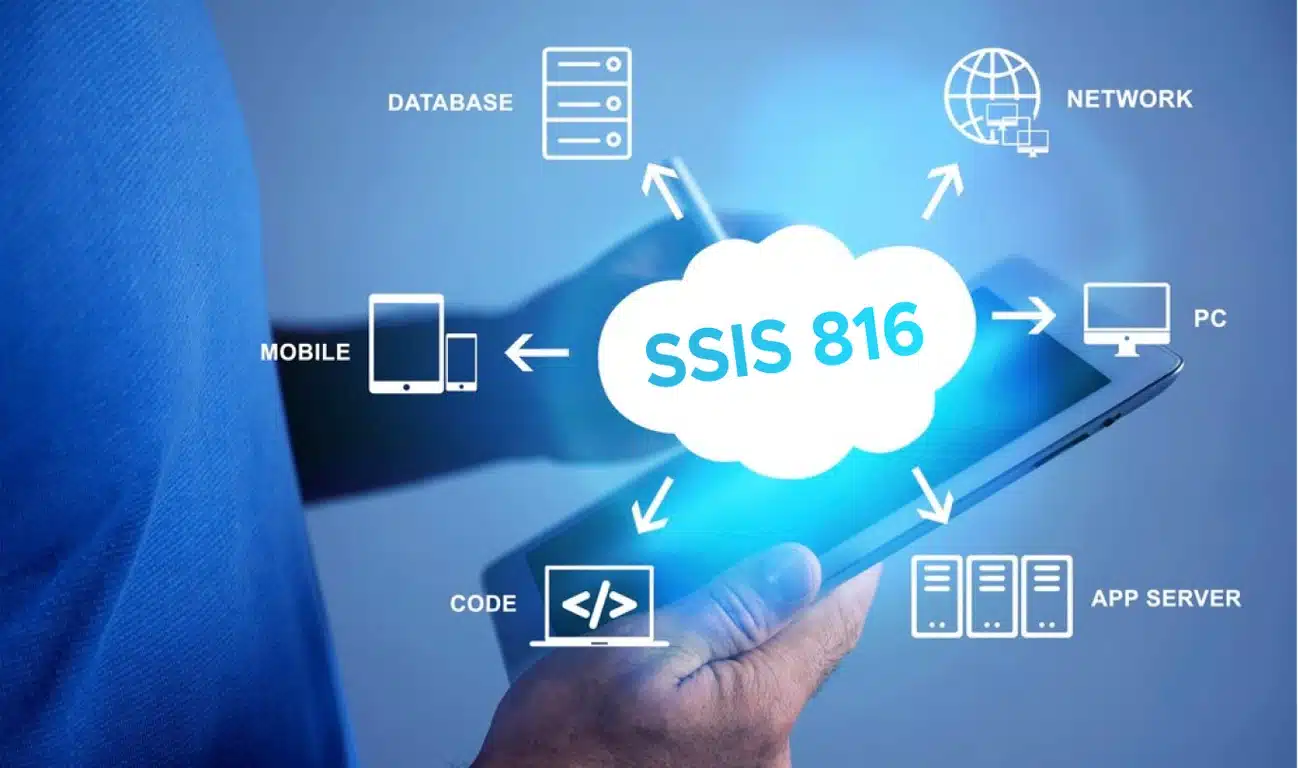Introduction
In today’s data-driven world, corporations require efficient tools for handling and combining large amounts of information. One such tool with robust capabilities in this area is SSIS 816 (SQL Server Integration Services). This knowledge can open up new horizons in data management and processing for each person engaged in the IT sphere, be it a data analyst or software developer.
What Is SSIS 816?
SSIS 816 is an advanced workflow application used primarily for moving, transforming, and aggregating various types of data from multiple sources into one place. It serves as one of the components within the Microsoft SQL Server database software package, where it has gained recognition due to its excellent performance record during extraction transformation loading processes. Whether you are dealing with migration projects or warehousing initiatives or need to automate complex tasks involving information manipulation, this tool will provide all the necessary features.
Critical Features Of SSIS 816
This versatile program boasts several features that make it indispensable to any professional working with information systems. Below are some key highlights:
- Data Integration: SSIS 816 supports databases, flat files, and cloud-based services, among other things, making seamless integration between different types of data sources more accessible than ever.
- ETL Process: Simplify the ETL process by allowing users to extract from various points, transform them, and load them into required destinations.
- Automation: Through automation, repetitive operations can be performed once, thus saving time while minimizing mistakes.
- Scalability: As organizations grow, so does their need for larger, more complex environments where scalability becomes paramount; luckily, SSIS 816 is built precisely with this goal in mind.
Why Is Data Integration Important Using SSIS 816?
Businesses need access to timely and accurate information to make informed decisions. A critical aspect of achieving this is data integration, which involves combining different data sets from various sources into one place for analysis using SSIS 816.
Enhancing Business Intelligence With SSIS 816
In business intelligence circles, there’s a need to aggregate information from different systems within an organization to gain holistic insights about how things are running; this is where SSIS 816 comes into play. By integrating such data, companies can gain a competitive advantage through improved decision-making processes based on a broader understanding of their operations.
Improving Data Quality And Consistency
Variations in quality standards across multiple suppliers often lead organizations to need help maintaining consistency around standard datasets, thus affecting accuracy levels during reporting periods; luckily, It has features that help address these issues. To achieve better outcomes, standardized validation should be cleaned before loading them into target systems, ensuring that different users use correct figures for analysis or reporting purposes.
How To Implement SSIS 816 For Your Business
To successfully bring SSIS 816 into your organizational environment, there are certain steps that need careful consideration depending on specific requirements when handling information systems. The following guide will assist you through this process:
Step 1: Evaluate Your Data Integration Requirements
Start by identifying where the data comes from, what types of information there are and how often they should be brought together. This will enable proper configuration of SSIS 816 based on user needs, enhancing overall system functionality performance.
Step 2: Create A Workflow For Your Data Integration Process
Designing flowcharts showing how particular sets of facts should move between points within an enterprise is essential when working with integrated software service platforms like SQL Server Integration Services. In other words, it involves mapping out extraction transformation loading (ETL) tasks, connection points, and paths along which data flows within the SSIS 816 environment.
Step 3: Configure SSIS 816 Components
SSIS (SQL Server Integration Services) 816 consists of various components, such as Control Flow, Data Flow, and Transformations. To ensure smooth data integration, configure these according to your design.
Step 4: Test and Deploy Your SSIS 816 Package
Before deploying your SSIS 816 package to a production environment, it is necessary to test it. Validate the accuracy of the data, test for performance, and ensure that the package meets all your business requirements.
Step 5: Monitor and Optimize
After deployment, monitor how well your SSIS 816 package performs regularly. Look for places where workflows can be optimized to handle large volumes of data or speed up processing time.
Best Practices for Using SSIS 816
To get the most out of SSIS (SQL Server Integration Services) version number eight hundred sixteen, keep in mind these best practices:
Maintain a Modular Approach
When working with SSIS, divide complex tasks into smaller modules. This will make development, troubleshooting, and maintaining packages created under this release number easier.
Use Logging and Error Handling
Log what happens during execution time or capture information about errors encountered within workflows using appropriate logging mechanisms provided by this software application suite. Doing this will enable one to track progress made so far and catch any anomalies early enough before they become unmanageable, thereby ensuring a quick solution-finding approach is achieved through timely detection.
Optimize Data Flow Performance
Minimize data movement within flows; employ proper transformations where applicable while ensuring optimization. Optimization should be done at every resource allocation level so that resources are allocated appropriately, cutting down processing time and enhancing overall efficiency within SQL Server Integration Services release 816.
Regularly Update And Maintain SSIS 816
Keep the SSIS 816 environment up-to-date with the latest patches from Microsoft, among other regular maintenance activities. Failure to do so may lead to inefficiencies or, worse, data breaches during an integration process involving different systems within an organization.
Common Challenges and Solutions with SSIS 816
Despite its power as a data integration tool, users face some challenges while working on SSIS eight hundred sixteen, which, if not addressed properly, can negatively impact the success rate of their projects. In this section, we shall discuss these common challenges together with corresponding solutions that can help overcome them, thereby ensuring the smooth flow of information across various platforms used during the implementation stage.
Challenge 1: Data Source Compatibility
Data sources may sometimes be incompatible with SQL Server Integration Services version eight hundred sixteen (SSIS 816). The best way to solve such issues is to check whether all required drivers have been installed correctly and configure each source’s settings accordingly.
Challenge 2: Performance Bottlenecks
If there are vast volumes of data to be processed, performance bottlenecks may appear. It is recommended that the data be divided into parts, transformations optimized, and performance monitoring instruments be applied to detect and fix such problems.
Challenge 3: Error Handling and Debugging
It workflows make error handling quite complicated. To find and fix errors at the development stage, powerful error-handling mechanisms must be built, and debugging tools offered by SSIS 816 must be exploited.
Also Read: Hdintranet
Future of Data Integration with SSIS 816
As the world moves forward in time, there will always be an increasing desire for more sophisticated ways to combine information. This expectation could only be met by SSIS 816, which has remained one step ahead as far as data integration solutions are concerned, courtesy of continuous upgrading by Microsoft.
Emerging Trends in Data Integration
There are several new developments in integrating data systems, such as using cloud-based storage facilities, among others, like real-time integration of information or even incorporating artificial intelligence and machine learning into workflows. In light of this fact, It can quickly adapt to these changes, thus providing businesses with the tools they need today so that tomorrow’s problems may catch them off guard.
The Role of SSIS 816 in Digital Transformation
Digital transformation programs can only work efficiently by joining different data sets. It allows smooth transitions between platforms during application programming interface execution, supporting broader objectives for digital change.
Conclusion
Data integration is made easy with SSIS 816, a flexible tool that businesses can use to manage and process their information more effectively. Businesses need to keep themselves updated about current trends and follow recommended approaches so they can utilize this resource to uncover new possibilities that will help them grow further.
If you are beginning your journey into data integration or looking at ways to improve what has already been done, there is no better platform than SSIS 816 in today’s data-driven world.











